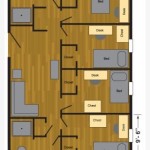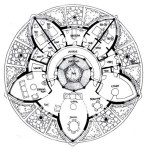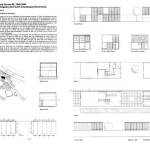Essential Aspects of Tiny House Designs Floor Plans
Tiny houses, with their allure of affordability, sustainability, and simplicity, are gaining popularity. Creating a functional and comfortable floor plan is crucial for maximizing the space in these compact dwellings.
1. Space Planning:
Efficient space planning is paramount in tiny house designs. Every inch of space must be carefully allocated to key areas such as sleeping, cooking, bathing, and storage. Consider multi-functional furniture, such as a sofa that converts into a bed, to optimize space usage.
2. Layout and Flow:
The layout of the floor plan should be well-organized to facilitate seamless movement. A clear pathway should connect important areas, such as the kitchen, bathroom, and living space. Avoid creating obstacles or cramped areas that hinder flow.
3. Natural Light:
Natural light plays a vital role in creating an inviting and spacious ambiance. Incorporate windows and skylights into the design to allow ample daylight to penetrate the space. Strategically placed windows can also provide privacy and unique views.
4. Vertical Space:
Maximizing vertical space is essential in tiny house designs. Loft sleeping areas, built-in storage shelves, and vertical gardens are clever ways to utilize this space. Vertical space can also be utilized for creating zones, such as a sleeping alcove or a study area.
5. Storage and Organization:
Storage is a crucial aspect of tiny house living. Ensure adequate storage options throughout the floor plan, including cabinets, drawers, under-bed storage, and wall-mounted shelves. Smart storage solutions, such as foldable furniture or multi-purpose items, can also help maximize space.
6. Essential Amenities:
While the size of tiny houses may be limited, it is essential to incorporate key amenities into the floor plan. This includes a functional kitchen with a sink, stove, and refrigerator; a bathroom with a toilet, shower, and sink; and a sleeping area that provides comfort and privacy.
7. Personalization:
The floor plan should reflect the individual needs and preferences of the occupants. Consider the desired level of openness or privacy, the preferred location of windows and doors, and the inclusion of special features or amenities that enhance comfort and functionality.
8. Flexibility:
Adaptability is key in tiny house designs. The floor plan should allow for flexibility in future needs and changes. Consider modular furniture or reconfigurable spaces that can be easily reconfigured as circumstances change.
9. Outdoor Living:
Tiny houses often feature outdoor living spaces, such as decks, patios, or porches. These extensions of the living space provide opportunities for relaxation, entertainment, and connecting with nature. Incorporate outdoor amenities such as seating, planters, or a fire pit.
10. Sustainability:
Tiny houses are known for their sustainability. Consider incorporating energy-efficient appliances, environmentally friendly materials, and passive design principles into the floor plan. These features can reduce the environmental impact of the dwelling.

Tiny House Design Floor Plans

Floorplan Image For Plan Small House Plans Floor Tiny

Tiny House Design Floor Plans

Tiny House Floor Plans Design Your

Family Tiny House Design Floor Plans Layout

Tiny House Floor Plans 32 Home On Wheels Design

Tiny House Floor Plans With Lower Level Beds Tinyhousedesign

27 Adorable Free Tiny House Floor Plans Craft Mart

12x24 Tiny House Plans Floor Layout Shed

10 X 20 Tiny Home Designs Floorplans Costs And Inspiration The Life








